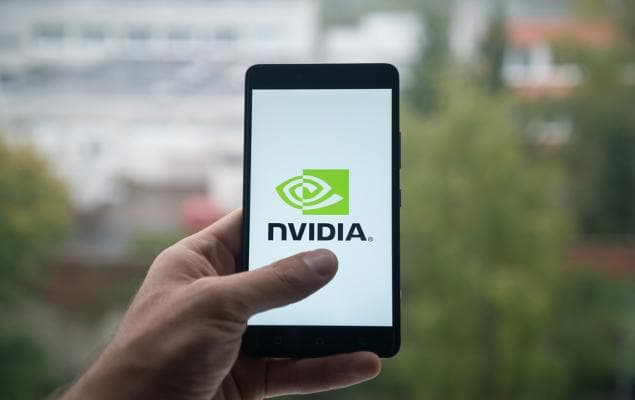Zacks Investment Ideas feature highlights: Nvidia

News Summary
Zacks Investment Ideas highlights that investors are not bullish enough on the AI boom, despite widespread optimism. Nvidia (NVDA) reached a record $5 trillion market value, becoming the world's first company to do so, following a flurry of product updates and partnerships announced at its GTC event. Key collaborations include providing computing power and AI models to Palantir, partnering with Eli Lilly to build an AI supercomputer for drug discovery, working with Uber to deploy 100,000 Level 4 autonomous cars by 2027, collaborating with the US Department of Energy on seven new supercomputers, and engaging with Nokia, Cisco, and T-Mobile on 6G cellular technology development. Concurrently, the Federal Reserve cut rates by 25 basis points as expected, though Chair Powell's caution on a December cut introduced market volatility. The US government shutdown continues but sentiment for its quick resolution is improving. Furthermore, President Trump and Chinese President Xi agreed to a one-year trade truce, with China halting rare earth export restrictions and resuming US soybean purchases, while the US will cut tariffs. President Trump also hinted that China would be discussing chip purchases with Nvidia. The Zacks model rates Nvidia as a 'Buy' (Rank #2) and anticipates another earnings beat for its Q3 results.
Background
The current period is marked by a significant technological revolution driven by Artificial Intelligence, distinguished from the late 1990s dot-com bubble by the strong corporate earnings of leading AI companies like Nvidia. Major global indices, including the Nasdaq Composite, S&P 500, and Dow Jones Industrial Average, are trading at or near fresh all-time highs. Macroeconomically, the Federal Reserve is in an easing cycle to support economic growth. Concurrently, the US government is experiencing a federal shutdown, impacting the release of economic data. On the international front, the US and China, after months of tension, saw Presidents Donald Trump and Xi Jinping meet and agree to a truce aimed at de-escalating trade tensions.
In-Depth AI Insights
What are the true drivers behind Nvidia's $5 trillion market cap, and how does it differ from historical bubbles? - Nvidia's ascent to a $5 trillion market cap is not purely a speculative bubble but driven by its indispensable role in AI infrastructure. Unlike many dot-com companies in the late 1990s with zero earnings, Nvidia's growth is underpinned by robust corporate earnings. - Its extensive ecosystem expansion, from data center AI compute (e.g., Palantir, US DOE collaborations) to vertical industry applications (e.g., Eli Lilly for drug discovery, Uber for autonomous vehicles), and next-gen communication tech (6G with Nokia, Cisco), demonstrates its AI technology as a foundational platform rather than a singular product. - This deep industry penetration and continuous innovation establish Nvidia as a core beneficiary of the AI revolution, providing a solid basis for its valuation. What are the strategic implications of the Trump-Xi trade truce for Nvidia and the broader tech supply chain? - While President Trump stated Blackwell chip sales to China weren't discussed, his hint that China would be "talking to Nvidia and others about taking chips" potentially opens a window for future Nvidia sales in the Chinese market, particularly for less advanced or customized solutions. - The one-year trade truce, especially China's halt on rare earth export restrictions and US tariff reductions, helps alleviate global supply chain uncertainties, potentially lowering manufacturing and logistics costs, indirectly benefiting global tech companies. - This limited de-escalation may signal a pragmatic strategy by both nations to pursue 'controlled decoupling' rather than outright confrontation in critical tech sectors, offering a temporary reprieve for companies like Nvidia to operate within a complex geopolitical landscape. How do the concurrent macro environments of Fed rate cuts and a government shutdown impact market sentiment and Nvidia's investment outlook? - The Federal Reserve's continued rate cuts provide liquidity support to markets, encouraging risk appetite. This is generally favorable for high-growth tech stocks like Nvidia, offering a supportive macro backdrop for valuations. - However, Chair Powell's cautious stance on future cuts and the ongoing government shutdown introduce uncertainty and potential volatility. The shutdown could delay critical economic data, impacting policy decisions and market expectations. - For Nvidia, despite its strong fundamentals, an escalation of macroeconomic uncertainty or a downturn in market risk sentiment could exert short-term pressure on its stock performance. Investors must balance its robust growth narrative with potential volatility from the macro environment.